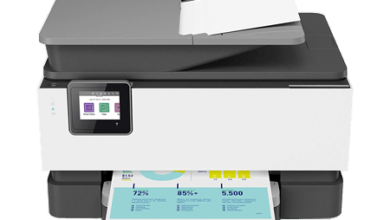Innovative Features That Will Set Your Taxi App Apart

The taxi app industry is highly competitive, with new players constantly entering the market. To ensure success and stand out in a crowded space, your app must offer innovative features that address user needs, provide convenience, and enhance the overall experience. In this blog, we’ll explore the key features that can differentiate your create taxi app from the competition.
1. Real-Time Tracking and ETA Updates
Why It Matters:
Real-time tracking gives users the confidence to know where their ride is at all times. Pair this with accurate estimated time of arrival (ETA) updates to enhance trust and reliability.
How to Implement:
Use GPS integration to provide live tracking on a user-friendly map interface. Leverage AI algorithms to calculate ETAs based on traffic conditions and route optimization.
2. Multiple Payment Options
Why It Matters:
Modern users expect flexibility in payment. Offering multiple options ensures convenience and caters to diverse preferences.
How to Implement:
Include cash, card payments, mobile wallets, and integrations with platforms like PayPal, Apple Pay, and Google Pay. For recurring users, enable seamless in-app wallet systems.
3. AI-Powered Ride Matching
Why It Matters:
Efficient ride matching reduces wait times and optimizes driver utilization. This feature is particularly useful during peak hours.
How to Implement:
Use AI algorithms to analyze real-time demand and driver availability. Prioritize ride requests based on proximity and traffic conditions, ensuring faster and more efficient service.
4. Multi-Stop Rides
Why It Matters:
Sometimes, users need to make multiple stops during their journey. Offering this feature adds convenience and flexibility.
How to Implement:
Allow users to add multiple destinations while booking the ride. Ensure the fare updates dynamically based on the route.
5. Ride Scheduling
Why It Matters:
Ride scheduling is essential for users planning their trips in advance. It guarantees availability at the desired time.
How to Implement:
Enable a feature for users to book rides hours or even days ahead. Integrate notifications to remind them of their scheduled ride and allow last-minute adjustments.
6. Driver Rating and Feedback System
Why It Matters:
A robust feedback system builds trust between users and drivers while ensuring quality control.
How to Implement:
Provide a simple post-ride interface for users to rate their experience and leave feedback. Use this data to improve service quality and incentivize top-performing drivers.
7. In-App Chat and Call Options
Why It Matters:
Efficient communication between users and drivers minimizes confusion and enhances service quality.
How to Implement:
Add in-app chat and call functionalities for seamless communication. Use encrypted VoIP systems for privacy and security.
8. Ride-Pooling Options
Why It Matters:
Ride-pooling is a cost-effective and eco-friendly option for users. It also maximizes driver efficiency.
How to Implement:
Offer ride-sharing features where users traveling in the same direction can share rides. Ensure dynamic pricing based on the distance and the number of passengers.
9. Safety Features
Why It Matters:
Safety is a top priority for users, especially during solo trips or late-night rides.
How to Implement:
Include an SOS button that connects directly to emergency services or a trusted contact. Offer live trip-sharing options so users can share their ride details with friends or family.
10. Advanced Driver Analytics
Why It Matters:
Providing insights into driver performance helps maintain service standards and optimize operations.
How to Implement:
Use analytics to monitor driver behavior, fuel efficiency, and adherence to schedules. Provide drivers with regular performance reports and tips for improvement.
11. Personalized User Profiles
Why It Matters:
A personalized experience boosts user satisfaction and loyalty.
How to Implement:
Allow users to customize their profiles with preferences, such as preferred vehicle type, favorite routes, or payment methods. Use this data to provide tailored ride suggestions.
12. Surge Pricing Transparency
Why It Matters:
During high-demand periods, users appreciate transparency about fare increases.
How to Implement:
Display clear notifications about surge pricing before users confirm their booking. Include an explanation of the factors causing the price increase.
13. Eco-Friendly Ride Options
Why It Matters:
With growing environmental concerns, offering green ride options appeals to eco-conscious users.
How to Implement:
Include hybrid or electric vehicles in your fleet. Highlight these options during the booking process and provide eco-score insights for each ride.
14. Loyalty Programs and Discounts
Why It Matters:
Rewarding loyal users encourages repeat business and strengthens customer retention.
How to Implement:
Create a loyalty program that offers points for completed rides, redeemable discounts, or exclusive perks. Use push notifications to inform users about ongoing promotions.
15. Integration with Public Transport
Why It Matters:
Integrating taxi services with public transport networks enhances accessibility and encourages app usage.
How to Implement:
Provide options for users to view nearby public transit stops and schedules. Offer combined fare estimates for rides involving both taxis and public transportation.
16. Multi-Language and Multi-Currency Support
Why It Matters:
This feature is essential for apps operating in diverse regions or catering to international travelers.
How to Implement:
Enable users to select their preferred language and currency during setup. Use localization tools to provide a seamless experience.
17. Real-Time Ride Suggestions
Why It Matters:
Anticipating user needs improves satisfaction and convenience.
How to Implement:
Use AI to analyze user habits and suggest frequent destinations or preferred ride types. For instance, recommend a ride home during evening hours or a trip to work in the morning.
18. Driver Incentive Programs
Why It Matters:
Happy drivers are key to maintaining service quality and app reliability.
How to Implement:
Implement reward systems based on driver performance, such as bonuses for completing a set number of rides or maintaining high ratings.
19. Offline Booking Mode
Why It Matters:
Connectivity issues shouldn’t disrupt user access to services, particularly in remote areas.
How to Implement:
Allow users to pre-book rides offline, syncing their requests automatically when an internet connection is reestablished.
20. Gamification Elements
Why It Matters:
Adding fun elements can improve user engagement and app stickiness.
How to Implement:
Introduce features like milestones for completed rides or referral programs with rewards. Use gamification to keep users returning to your app.
Conclusion
In the competitive landscape of taxi app development, innovation is crucial to staying ahead. By incorporating advanced features like real-time tracking, safety tools, eco-friendly ride options, and personalization, you can create a standout app that resonates with users and ensures long-term success.
Remember, the key to a successful taxi app isn’t just about adding features; it’s about understanding user needs, solving pain points, and delivering a seamless experience. Investing in these innovative solutions will not only set your app apart but also position your business as a leader in the ride-hailing industry.
Let us know if you’d like help implementing these features or crafting a development strategy tailored to your goals!



